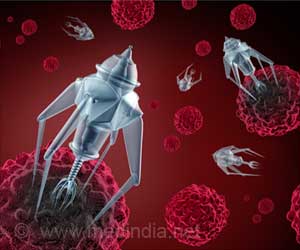Tiny gummy-like robots could be used for targeted therapy and to help diagnose and prevent disease, reveals a new study.

‘Gummy-like robots that could help prevent disease, reveals a new study. Scientists have developed tiny, hydrogel-based muscles that can help manipulate and mechanically stimulate biological tissue. These biocompatible robots could be used for targeted therapy and to help diagnose and prevent disease.’





At EPFL, Selman Sakar's research team has developed micromachines able to mechanically stimulate cells and microtissue. These tools, which are powered by cell-sized artificial muscles, can carry out complicated manipulation tasks under physiological conditions on a microscopic scale.The tools consist of microactuators and soft robotic devices that are wirelessly activated by laser beams. They can also incorporate microfluidic chips, which means they can be used to perform combinatorial tests that involve high-throughput chemical and mechanical stimulation of a variety of biological samples.
Like Legos
The scientists came up with the idea after observing the locomotor system in action. "We wanted to create a modular system powered by the contraction of distributed actuators and the deformation of compliant mechanisms," says Sakar.
Their system involves assembling various hydrogel components - as if they were Lego bricks - to form a compliant skeleton, and then creating tendon-like polymer connections between the skeleton and the microactuators. By combining the bricks and actuators in different ways, scientists can create an array of complicated micromachines.
Advertisement
With this method, scientists are able to remotely activate multiple microactuators at specified locations - a dexterous approach that produces exceptional results. The microactuators complete each contraction-relaxation cycle in milliseconds with large strain.
Advertisement
Source-Eurekalert









